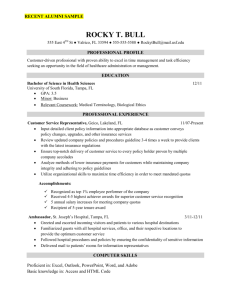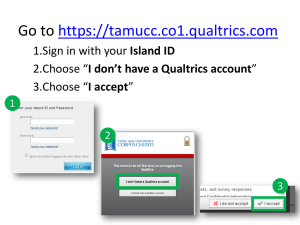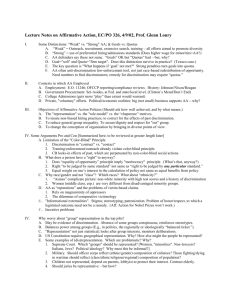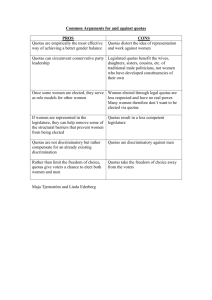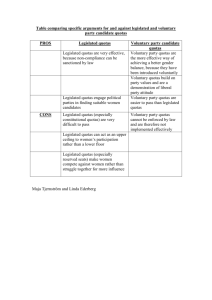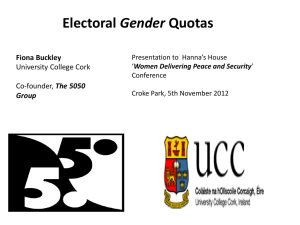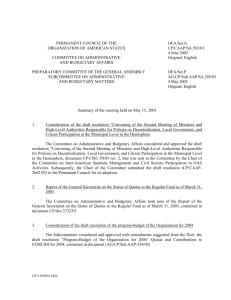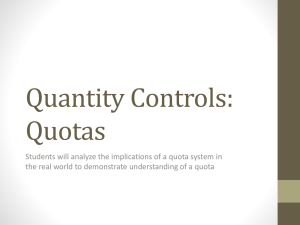Gender Quotas and Women's Political
advertisement
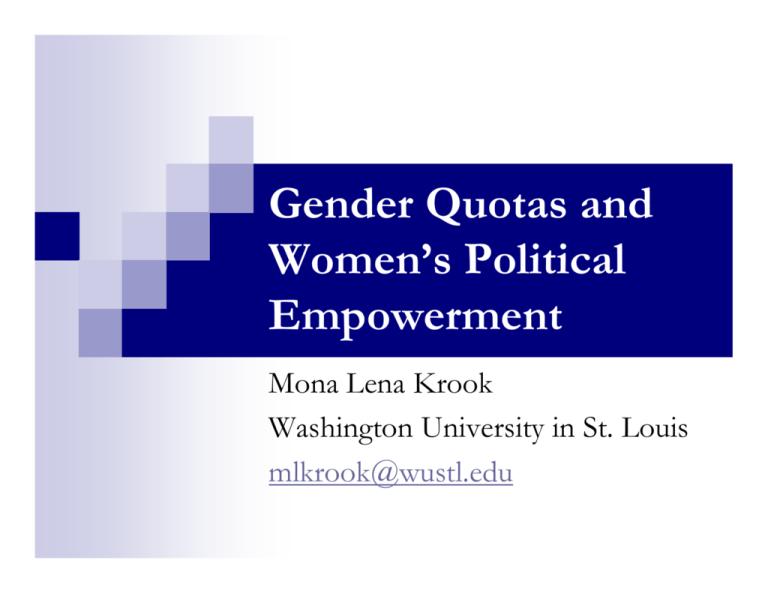
Gender Quotas and Women’s Political Empowerment Mona Lena Krook Washington University in St. Louis mlkrook@wustl.edu Candidate gender quotas 100+ countries have adopted quotas for the selection of female political candidates 1930-1980: 10 countries 1980s: 12 countries (20+ total) 1990s: 50+ countries (70+ total) 2000s: 40+ countries (100+ total) Gender quota policies Reserved Seats First appeared in 1930s, but as recently as 2005 Africa, Asia, and the Middle East Party Quotas First adopted in 1970s by left parties in W. Europe Many different parties and regions of the world Legislative Quotas First appeared in 1990s Latin America, Africa, Middle East, and Europe Why are quotas adopted? Mobilization of women’s groups Strategic calculations of political elites Norms of equality and representation Pressure from international organizations Transnational information sharing Why do quotas have varied effects? Details of the measures Types, requirements, and sanctions Institutional frameworks Electoral systems and party systems Actors for and against implementation Elites, citizens, courts What are the broader effects of quotas? Descriptive representation Kinds of women elected Substantive representation Passage of ‘women-friendly’ public policy Symbolic representation Public attitudes toward women in politics Political engagement of female voters Preliminary evidence: descriptive representation Elite women, party activists, connections to prominent men (Bangladesh) Women with less experience (Germany, France) Intra-country variations (India) Cities: higher castes, higher education, and higher prestige professions Rural areas: lower castes, landless, illiterate, married, under 40, with no experience Preliminary evidence: substantive representation Quota women are more loyal to party leaders than women who win open seats (UK) Quota women act as proxies for men, usually male relatives (India, Pakistan) Quotas confer a mandate (Norway, Rwanda) Quota women bring new issues and gain confidence over time (Argentina, India) Preliminary evidence: symbolic representation Public attitudes on women in politics: Negative publicity (UK, Kosovo) Positive effects (India; Africa) Political efficacy of female voters: No effect on political activities (Mexico) Spur mobilization of women (Costa Rica) More women consider running (Uganda) Conclusions Quotas are a diverse set of measures. Quotas can reach the political agenda for many different reasons. Quotas can have a variety of effects on the election and empowerment of women. *More systematic research is needed on quotas to determine their effects on women as a group. Conclusions Is there a need for gender quotas? – Yes! However, we need to better understand: Where they come from How they are designed What positive/negative effects they may have To ensure that quotas serve women as a group
